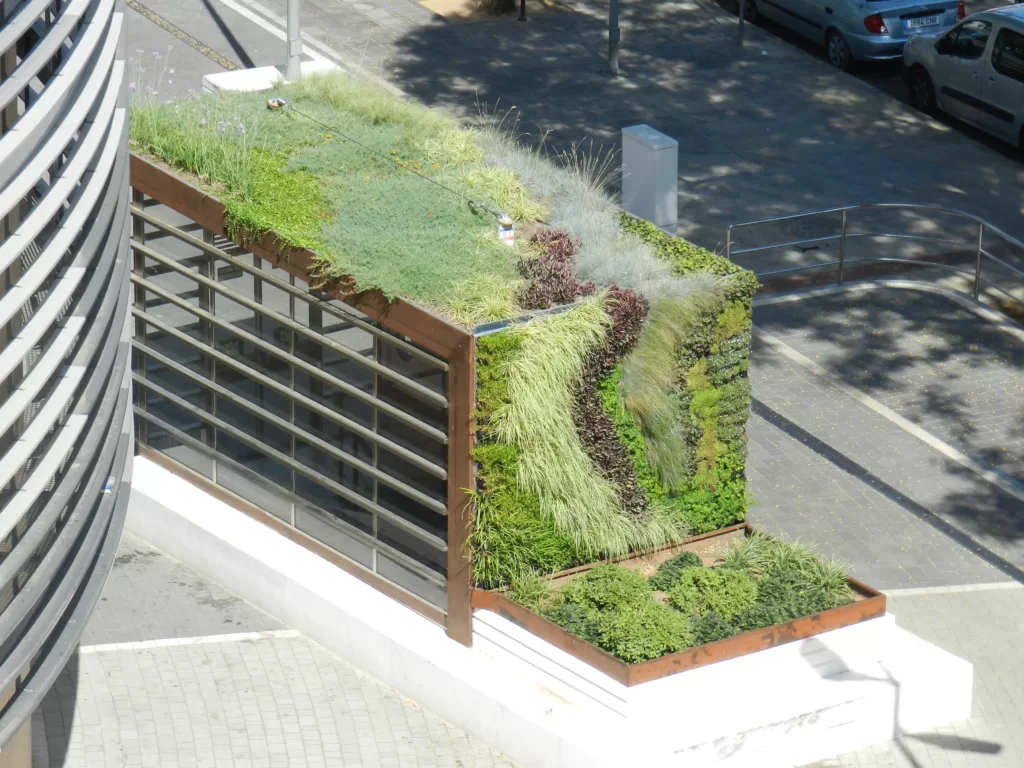An investigation by a research group called The Resilience of Cityscapes, published in the international Biotope City journal, showed that green roofs, living walls, and greened permeable pavements has a multitude of positive effects.
“The impact of green infrastructure on an urban fabric has been visualised by computer modeling tools. The computer model results showed that all tested green technologies provide benefits to the urban microclimate and water storage capacity,” the report said.
It showed that green infrastructure is the solution to the resilience of cityscapes worldwide. The report said there is a huge trend in urbanisation with more than 50 percent of the world’s population now living in cities.
“Two effects of this influx can be observed: the occupied city area grows and
density increases. At the same time citizens request more infrastructure from cities such as public transport, recreation and sewage systems. City planners are challenged to combine the pressure of growth and integration of satisfactory infrastructure.”
The research monitored 14 green roofs, five living walls and nine surface consolidation methods in the city of Vienna to see their microclimatic effects.
Compared to surfaces like plaster or brick, plants convert sun energy into oxygen and air humidity.
“It is assumed that plants ameliorate the urban microclimate (by adding humidity and reducing radiation and wind speed) while regular surfaces
reduce the thermal comfort of cities. Aside from the positive microclimatic effects plants are also able to store water.”
Plants also improve the predicted mean vote (PMV), which describes the human thermal wellbeing. The research tested an urban area in Vienna under different types of “scenarios”. These include the climate scenario, greening scenario, the minimum greening scenario, and the maximum greening scenario.
The tests found that green infrastructure can act as a buffer for climatic extremes.
“By means of computer simulation, the measurements at test sites have been transferred to representative urban typologies of the City of Vienna. To find out, which microclimatic effect could be achieved by green infrastructure, two greening scenarios have been applied on urban typologies and subjected to today’s and future climatic framework conditions. The simulations make clear, that the urban microclimate can be ameliorated by integration of green infrastructure.”
It emphasised that green infrastructure is the “one appealing solution to improve the resilience of cities against climate change”.
“Apart from the microclimatic effects and the positive influence on thermal comfort, green infrastructure provides a broad range of added values: water retention, health promotion and psychological effects (stress reduction), habitat and habitat connection for fauna and flora, biodiversity and urban farming.”
The report also realised the hindrances to the implementation of green infrastructures such as different types of value on facades where some are often protected. There are also things like different regulations in different cities or the fact that most buildings are privately owned and therefore needs incentives for their properties to be developed into green infrastructure.
These are things that need to be overcome as the report also said that just a single green infrastructure would not be effective in the bigger scheme of things. In order to have the full effect of the benefits of green infrastructures in cityscapes, “a combination of different types of green infrastructure and a network of green infrastructure throughout the city is necessary”. 






